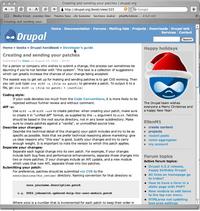Easy, trackable WordPress elearning with Gravity Forms quizzes and the TinCanAPI
I work in a small learning management department in a large Health System. One of the “forever” problems we’d like to solve, is how to get out of the way of our many clinical subject matter experts and make it EASY for them to put trackable learning content online by themselves. Why is this still a problem in this age of online applications? Simply put: cost, learning curve and trackability.
Licensing costs in a decentralized environment
Software license costs are a big issue in a distributed authoring environment, particularly for departments that watch every penny. There are hundreds of potential authors out there, mostly in departments that do not prioritize the purchase of elearning software. Licenses for the big elearning software packages (Articulate, Storyline, Lectora, etc.) are not inexpensive, even with academic discounts and whatever site-licenses may exist.



